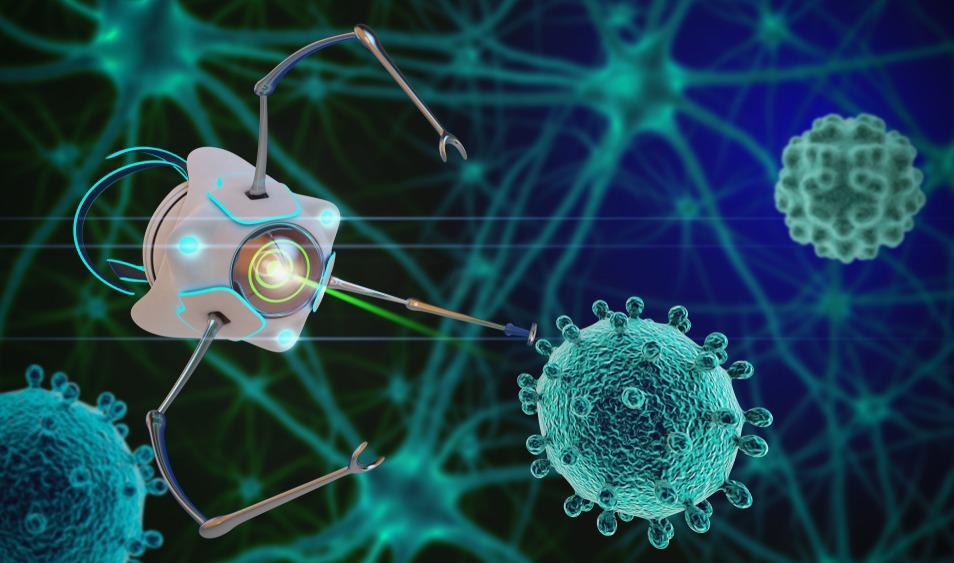Experimenters at Penn Medicine have discovered a new, more effective system of precluding the body’s own proteins from treating nanomedicines like foreign raiders, by covering the nanoparticles with a coating to suppress the vulnerable response that dampens the remedy’s effectiveness.
When fitted into the bloodstream, unmodified nanoparticles are swarmed by rudiments of the vulnerable system called complement proteins, driving an seditious response and precluding the nanoparticles from reaching their remedial targets in the body. Experimenters have cooked some styles to reduce this problem, but the Penn Medicine platoon, whose findings are published in Advanced Accoutrements, has constructed what may be the stylish system yet coating nanoparticles with natural suppressors of complement activation.
Nanoparticles are bitsy capsules, generally finagled from proteins or fat- related motes, that serve as delivery vehicles for certain types of treatment or vaccine-; generally those containing RNA or DNA. The best- known exemplifications of nanoparticle- delivered drugs are mRNA vaccines against COVID-19.
It turned out to be one of those technologies that just works right down and better than anticipated.”
Jacob Brenner, MD, PhD,co-senior author, associate professor of Pulmonary Medicine in the Division of Pulmonary, Allergy, and Critical Care .
The complement problem
Curatives grounded on RNA or DNA generally need delivery systems to get them through the bloodstream into target organs. Inoffensive contagions frequently have been used as carriers or”vectors”of these curatives, but nanoparticles are decreasingly considered safer druthers. Nanoparticles also can be tagged with antibodies or other motes that make them hone in precisely on targeted apkins.
Despite its pledge, nanoparticle- grounded drug has been greatly limited by the complement attack problem. Circulating complement proteins treat nanoparticles as if they were bacteria, incontinently sheeting nanoparticle shells and summoning large white blood cells to ingurgitate up the” raiders.” Experimenters have tried to reduce the problem bypre-coating nanoparticles with cloaking motes-; for illustration, the organic emulsion polyethylene glycol ( Cut) attracts water motes to form a watery, defensive shell around nanoparticles. But nanoparticles disguised with Cut or other defensive substances still draw at least some complement attack. In general, nanoparticle- grounded drugs that must move through the bloodstream to do their work (mRNA COVID-19 vaccines are fitted into muscle, not the bloodstream) have had a veritably low effectiveness in getting to their target organs, generally lower than one percent.
Adopting a strategy
Affiliated Stories
SARS-CoV-2 infection and impunity in gestation and fetal development
Social distancing surveillance how robots will keep you in line
A Day in the Life of a Thoracic and Cardiovascular Surgeon
In the study, Brenner and Myerson and their platoon came up with an volition or add-on approach to cover nanoparticles-; an approach grounded on natural complement- asset proteins that circulate in the blood, attaching to mortal cells to help cover them from complement attack.
The experimenters plant that, in lab- dish trials, coating standard Cut- defended nanoparticles with one of these complement impediments, called Factor I, handed dramatically more protection from complement attack. In mice, the same strategy dragged the half- life of standard nanoparticles in the bloodstream, allowing a much larger bit of them to reach their targets.
” Numerous bacteria also cover themselves with these factors to cover against complement attack, so we decided to adopt that strategy for nanoparticles,” saidco-senior author Jacob Myerson, PhD, a elderly exploration scientist in the Department of Systems Pharmacology and Translational Rectifiers atPenn.
In a set of trials in mouse models of severe seditious illness, the experimenters also showed that attaching Factor I to nanoparticles prevents the hyperactive-antipathetic response that else could be fatal.
Farther testing will be demanded before nanomedicines incorporating Factor I can be used in people, but in principle, the experimenters said, attaching the complement- suppressing protein could make nanoparticles safer and more effective as remedial delivery vehicles so that they could be used indeed in oppressively ill cases.
The experimenters now plan to develop strategies for guarding not only nanomedicines but also medical bias, similar as catheters, stents and dialysis tubing, which are also susceptible to complement attack. They also plan to probe other defensive proteins beside FactorI.
“We are feting now that there is a whole world of proteins that we can put on the face of nanoparticles to defend them from vulnerable attack,”Brenner said.

